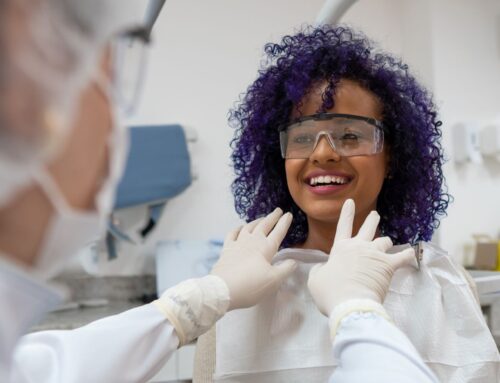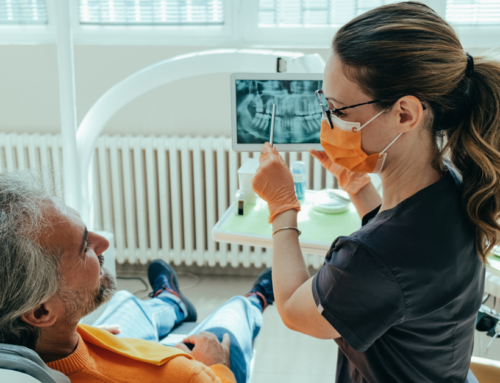Getting to Know More About Common Dental Terminology
Whether it’s your first time hearing about a particular procedure in a dental office, or you’ve always wondered what a specific dental phrase means, this resource should prove to be quite helpful. We’ve compiled many of the most common dental terms and phrases, and explained exactly what they mean.
Dentists, hygienists, oral surgeons and orthodontists are committed to providing the best possible care for their patients. This includes delivering details about a wide range of dental procedures and advanced treatments to patients to ensure that they are properly informed about what’s involved and what they can expect before, during, and after. However, there are often terms and phrases used that may not be familiar to all patients in all situations.
To this end, we believe that it’s our duty to offer clarity on the common dental terminology that is frequently used in clinics across Canada. This is why we’ve put together this resource. Here, you’ll find a variety of common terms used in dental clinics and on dental information websites, explained in detail so you’ll know exactly when they would be used and what they mean in the right context.
This isn’t an exhaustive list, and this article will likely be just the first in a series of terminology references that will continue to provide clarity and understanding about all types of dental treatments and oral health care procedures. With that said, let’s get right into it!
Occlusion – You’ll usually hear the word ‘occlusion’ mentioned in situations such as when your dentist or hygienist is taking measurements for your bite pattern. In simplest terms, occlusion refers to the physical contact made between the teeth on your top jaw and your bottom jaw. If there are misalignments of the teeth in either or both of the top and bottom jaws, then a dentist will typically refer to this as ‘malocclusion’.
If the malocclusion is determined to be very minor, then it’s possible that no corrective action will be necessary. However, if the malocclusion is more pronounced, then a corrective action such as braces may be recommended to provide better alignment of the teeth and improved occlusion.
Dental Abscess – An abscess is defined as a bacterial infection of the body that is localized in a particular area, typically underneath the skin although they can form in other areas of the body as well. When an abscess forms in the teeth or gums, it is referred to as a dental abscess. Symptoms usually include swelling, soreness, temperature sensitivity, throbbing, fever, and in some cases dental abscesses can also bring about difficulty in breathing or swallowing.
Dental abscesses require professional attention to properly treat, so if you are experiencing symptoms such as those mentioned above, you should arrange for a dental appointment to examine the situation as soon as possible. Dental abscesses are usually treated with a combination of antibiotics and incisions to drain away the fluid build-up created by the infection. In more advanced cases of dental abscesses, it may be necessary to extract the tooth or perform a root canal to remove the infected material and restore the integrity of the tooth and surrounding area.
Root Canal – As it is so closely tied to the previous entry on this list, the next definition is ‘root canal’, which is a dental treatment that removes infected tooth material and repairs the affected area. During a root canal procedure, the patient will receive freezing anesthetic and sedation. Then, the dentist will either make an incision in the gums or drill down into the enamel of the tooth in order to gain access to the infected tooth pulp material. This area is then drained and the infected pulp removed. The empty space inside the tooth will now be permanently filled with an artificial dental material.
Biological Periodontology – This medical term refers to the use of a holistic-style approach to treat diseases and disorders of the gum tissue. Rather than solely treating gum disease after it has developed, biological periodontology takes a proactive stance on gum health to identify potential problems early, and act appropriately.
Georgian Dental’s holistic approach to gum recession treatment combines comprehensive dental care with a review and analysis of a variety of lifestyle factors such as diet and nutrition, sleep quality, stress levels, and many other considerations that have a direct impact on your overall health and well-being. In short, biological periodontology is a preventive method of treating gum health conditions by looking at your overall state of health in conjunction with your oral health.
Amalgam – If you’ve ever had a cavity that required a filling, then you’ve had amalgam used in your dental care. Amalgam is a versatile dental material that is used to fill in gaps and holes in a tooth and mimic natural tooth dentin.
In years past, amalgam once was made from a variety of materials that included mercury. However, as medical science learned more about the harmful toxic effects of mercury on the human body, alternative substances were selected. Modern dental amalgam contains no traces of mercury and appears more natural in color to authentic teeth, allowing it to blend in and be virtually indistinguishable.
If you have fillings that were created many years ago, we recommend you contact us today for an examination to determine if any of them happened to contain mercury. We utilize a specific Mercury Rescue protocol to remove and replace any fillings containing mercury, and help reverse any possible toxicity that may have occurred.
Dental Bonding – When a tooth becomes cracked or chipped, it can often be repaired using a specialized dental resin in a process known as dental bonding. To repair a crack, the area is first prepared by cleaning and shaping the crack to better adhere with the resin. Then, the resin is applied to the crack and manipulated to completely fill the space and mimic the original natural shape of the tooth. To repair a chip on a tooth, the tooth surface is prepared and the resin is applied and shaped to restore the entire missing section.
Once the shaping is complete, the resin is cured using a specialized UV light emitter, making the repair super-hard and virtually identical in strength to natural tooth material. After curing, your dentist will do a little extra shaping and polishing to complete the restoration and finalize the dental bonding procedure.
Palate – Although the term ‘palate’ is often used colloquially to refer to one’s ability to identify and appreciate flavours, in a dental clinic it does not have anything to do with your tongue or senses. The palate of your mouth is the roof section of your mouth on the upper jaw, and it is divided into two distinct sections. The hard palate is the bony front section of the roof of your mouth, whereas the soft palate refers to the fleshy portion of the roof of your mouth that typically starts near your back molars.
Invisible Braces – Most people will be familiar with braces, as the metal bracket-and-wire dental appliances used to straighten teeth are commonplace and noticeable on many teens and young adults. However, when you hear the phrase ‘invisible braces’, you may just be wondering what this is referring to, as traditional metal braces are certainly not invisible. In actuality, invisible braces most often refer to the Invisalign method of orthodontic treatment.
Invisalign is different from traditional styles of braces in that it uses plastic aligners fitted over top of the teeth in order to exert the mild but steady pressure used to gradually reposition and realign the teeth in the jaw. These plastic aligners are made from a completely transparent composite material, and are smooth and thin, making them virtually invisible to others and extremely comfortable for the patient to wear. In fact, Invisalign aligners can even be removed and replaced by the patient at any time, enhancing comfort and making eating and oral hygiene habits much easier.
If you or someone in your family is in need of braces, contact the team of professionals at Georgian Dental today to learn more about the innovative Invisalign approach to orthodontic treatment.
Are There Other Dental Terms or Phrases You’d Like Clarity On?
We hope that you’ve found this resource helpful and insightful, but we know that there may be many more terms and phrases that you might want to learn more about. If so, we welcome the opportunity to speak with you and answer any questions you may have about all types of dental treatments and procedures. Contact us today to speak with one of our professionals, or to book an appointment for a more in-depth discussion.
Check back here on the Georgian Dental Big Mouth Blog for the next interesting article and stay tuned for another instalment of the Dental Dictionary!
Appointment Request
If you’re interested in any of our procedures, and would like to meet with one of our dentists to discuss options, costs and get additional information, complete this short form and we’ll give you a call to arrange for a no-obligation appointment at our Barrie clinic.










